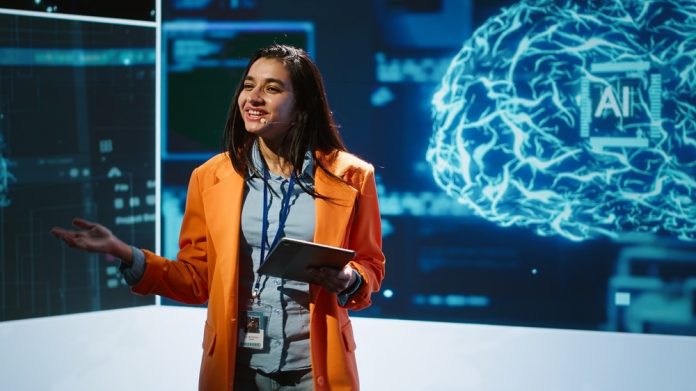
The nature of skills—how they’re sourced and developed—has now become critically important to businesses in virtually all industries. In a report by the World Economic Forum, which looked at the need for upskilling or reskilling in the modern workforce as artificial intelligence (AI) and other technologies influence the way we work, it was revealed that nearly half (44 percent) of workers will experience skills disruption. In other words, their roles are going to change to the extent that they will become “disrupted” and need to learn new skills in order to stay productive and add value. This already is posing a challenge to HR teams, who can see this skills gap growing within their organizations. How they bridge that gap, while retaining their workforce and keeping them motivated, will be one of the biggest challenges in 2025.
Many businesses will approach this challenge by re-evaluating their human capital management (HCM), with many turning to AI-powered and AI-assisted tools to help them stay on top of hiring, retention, and learning and development (L&D). But while HCM absolutely needs to modernize, the role of humans is likely to become more—not less—important.
Keeping the “Human” in Human Capital Management
The principle of human capital management, which seeks to get the most value from an organization’s workforce by treating it as a core business asset, is not new. However, for the majority of organizations, the delivery mechanism is outdated, relying on manual processes and tools that no longer reflect the hiring needs, skills requirements, sentiments, or career progression of its employees. Typically built around rigid job roles and vulnerable to human bias, these traditional systems promote linear career progression and standardized learning pathways. But today’s work environment is anything but linear, and skills matter more than roles. That means people, rather than the roles they perform, are a company’s biggest asset—and the greatest judge of people is, well, people.
To quote Deloitte’s Human Capital Trends 2024 Report, “We live in a human-powered economy.”
This is true even as we transition away from people performing repetitive, manual tasks to an era of increased automation. Managing people—human capital—is arguably more critical as the amount of business value they oversee increases. This includes the labor-saving AI-infused tools and powerful analytics programs that are helping to drive growth and increase productivity.
Yet, most HCM systems have struggled to keep up with the major workforce disruption of the last few years. Shorter tenures coupled with people having more varied histories have further highlighted the limitations of traditional systems. For instance, as workforces have become more skills-centered, rather than contextualizing skills development according to the needs of the organization, traditional systems with primitive analytical and predictive capabilities have continued to measure development by how many training course modules are completed. By contrast, human-verified skills development would be a much better measure of learning effectiveness, and one that modern, flexible, intelligent learning management systems (LMS) can facilitate. While aspects of HCM and L&D can be automated and personalized using AI-assisted learning recommendations and sentiment analysis, it’s ultimately the people driving these tools and their active verification of how skills are applied and utilized that will seal the deal.
Keeping Humans Happy Is Good for Business
Approaches to HCM now are being redefined around a human-powered, AI-infused workforce that requires “organizations to focus less on how much people benefit their organization and more on how much their organization benefits people” (Deloitte). In a recent survey, three-quarter of respondents knew it was important to get this right. However, just under half were taking action to improve their human capital management along these lines, even though we know employees who feel valued and supported aren’t just happier, they improve the bottom line through increased sales and innovation. People tend to feel valued when their skills are put to use, particularly when it leads to promotion. Indeed, Deloitte’s figures suggest businesses that make meaningful progress in motivating and retaining their human capital are nearly twice as likely to achieve their desired business outcomes.
Despite this, we continually hear about people leaving organizations ultimately because they felt undervalued and unheard. Modernizing HCM can help organizations not only map skills to employees (essential for a skills-centered economy) but observe the needs and specializations of each individual employee and balance them with the overall aims of the business. Unlike traditional tools, modern HCM systems can analyze vast amounts of employee data to identify strengths, predict career trajectories, recommend personalized development plans, and provide employees with a range of learning options that best match their preferences in terms of availability and pace of learning.
Retaining Talent
HR departments know only too well that on-the-job training and development are key to keeping employee skills aligned with business needs, as well as keeping employees motivated and invested in progressing their career long-term. Currently, many workplace skills have a half-life of around five years at best, or closer to two-and-a-half years if they’re technical skills, meaning that reskilling people is no longer a theoretical future challenge but an immediate and ongoing concern. Using modern LMS platforms capable of offering AI-driven insights and real-time reporting, organizations can understand the exact skills an employee needs to improve, and can ensure that training is tailored, learning is contextualized, and effectiveness is measured by meaningful metrics that can be delivered, succinctly, to human managers.
Always Looking Ahead
One key attribute of a modern, skills-centered HCM approach is its ability to realize not only individual potential but to maximize value at scale. This could take the form of continually identifying what critical skills are needed across the organization, assessing who has those skills, and then matching employees to those roles. Or helping organizations evaluate between upskilling and hiring new employees. Successful HCM reshapes the workforce slowly over time to ensure an organization’s biggest asset—its people—have the core skills to help it achieve its long-term business objectives.

